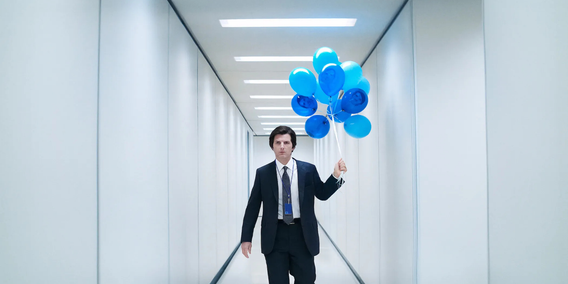It’s 7:00 am on a Sunday and Anika’s alarm goes off. There’s nowhere she needs to be, yet she’s already mentally scrolling through her to-do list. The idea of staying in bed or staring at the ceiling feels wrong. “I’ll just fold the laundry before breakfast,” she tells herself, as a familiar pang of guilt surfaces. As an Indian woman, Anika has internalized the mantra that being busy equals being worthy. The mere thought of doing nothing triggers anxiety.
She’s not alone. In my therapy practice, I meet many women like Anika who struggle with what we call productivity guilt—the nagging feeling that every minute must be accounted for with output. But what if I told you that doing nothing could be the best thing you do for your mental health? What if idleness, daydreaming, and rest are not indulgences but essential ingredients for a fulfilling, creative, and emotionally resilient life?
“In this age of hustle and optimization, rest gets a bad rap… We forget that how productive we are in the long run is a function of how and when we choose to pause.” — Sonali Gupta, psychologist
Hustle Culture and Productivity Guilt
In a culture that prizes 70-hour work weeks and glorifies the grind, deliberately doing nothing can feel revolutionary – especially when burnout has become a badge of honor. (Assocham 2021 study found that over 60% of Indian professionals suffer from anxiety and depression due to work pressure.) Yet the truth is that constant busyness comes at a high price. Our brains, much like our bodies, are not designed for relentless exertion.
Neuroscience tells us that when we rest, our mind isn’t actually idle—it’s busy in a different, deeper way. When you let your thoughts wander with no agenda, you activate the brain’s default mode network, the mental “screen-saver” that kicks in during quiet downtime. This network uses about 20% of the body’s energy when we’re at rest, engaging in vital inner work: retrieving memories, linking ideas, and helping us connect with ourselves. It’s why some of our best ideas strike in the shower or while gazing out a window.
Modern life, however, makes such mental stillness hard to come by. “We need processing time during the day to synthesize everything that’s happening to us,” says Dr. Alex Dimitriu, a psychiatrist. “With the advent of the smartphone our downtime has been taken away.” From the incessant WhatsApp pings to Instagram’s infinite scroll, every free second risks being filled. Over time, this always-on barrage leaves us mentally fatigued and emotionally brittle. Without pauses, we lose the ability to reset.
Growing up in India, many of us heard proverbs like “kaam karo, kaam karo” (“keep working, keep working”) or saw our mothers wake up at dawn to ensure not a moment of the day was “wasted.” Little wonder that Indian women often wear busyness as a second skin. We juggle demanding careers, family duties, and societal expectations that tell us a “good” woman is one who sacrifices and strives constantly. Taking a break can feel not just lazy, but almost sinful.
In therapy sessions, I often see the fallout. A client (let’s call her Rima), a 38-year-old marketing manager and mother of two, broke down in tears admitting: “Even on Sundays I can’t relax. I feel guilty if I’m not doing something. I don’t remember what it’s like to just be.” Her story echoes what so many women experience: a profound productivity guilt that strips away any joy in downtime, leaving them exhausted rather than fulfilled.
The irony is that rest is deeply productive. As psychologist Laura Pendergrass puts it, “There’s nothing, no task, no paycheck, no project that’s more important than you and your well-being.” When we chronically neglect rest, we sacrifice our mental health and even our effectiveness. Think of your energy as a well: overdraw without replenishing and it will run dry. Taking time to do nothing is how you refill that well. It’s not laziness; it’s self-preservation.
The Science of Stillness: Why Idleness Boosts Your Brain
Far from being frivolous, unstructured downtime is a cognitive powerhouse. Research shows that taking regular breaks improves concentration, mood, and overall productivity. When we step off the hamster wheel, even briefly, we give our mind a chance to consolidate memories and make novel connections—similar to what happens during sleep. (Study: Rest and creativity)
One study found that a remarkable 40% of our most creative ideas strike during periods of rest or daydreaming. (PsyPost) Indeed, daydreaming itself has been linked to benefits like enhanced creativity, better problem-solving, and even a greater ability to delay gratification.
Consider this: Have you ever solved a problem after you “slept on it” or had an aha! moment during a leisurely evening walk? That’s the art of doing nothing at work. By contrast, constantly forcing your focus can backfire. Our mental resources are finite; without intervals of rest, the quality of our output degrades. Downtime is the mind’s way of rebooting – clearing out mental clutter and subtly working through emotions in the background. As Stanford’s Dr. David Spiegel notes, the brain uses idle time to sift through and integrate our experiences, which is crucial for emotional processing.
Real rest means mental disengagement from obligations and stimulation – it’s a gentle idleness, a waking pause.
“Rest is not this optional leftover activity. Work and rest are actually partners… The better you are at resting, the better you will be at working.” — Alex Soojung-Kim Pang, researcher
The Art of Doing Nothing: A Practical Toolkit
Making the shift from relentless doing to intentional being can be challenging, but there are concrete ways to start. Think of it as building a new muscle – the rest muscle. Here are some therapist-approved strategies to help you practice the art of doing nothing:
Schedule Downtime like an Appointment: Block out small windows of “nothing” in your calendar, just as you would for a meeting. Treat this time as non-negotiable. It could be 15 minutes of staring out the window with a cup of chai. At first, you might feel odd or restless – that’s normal. Stick with it; you’re retraining your brain to value pause.
Challenge the Guilt (CBT Technique): Notice the thoughts that pop up when you try to rest (“I’m being lazy,” “I should be doing something useful”). Write them down and then ask: Is this true? Would you say the same to a friend who needed a break? Likely not. Replace that self-criticism with a more compassionate truth, e.g., “Rest will recharge me, and I deserve this recharge.” Over time, this cognitive reframing erodes the power of productivity guilt.
Mindfulness of Nothing: Incorporate short mindfulness exercises that involve simply observing, not doing. Lie down and pay attention to your breath, or sit on your balcony and listen to the evening sounds of the city. Practice just being present without any goal. This can ease the anxiety that often accompanies doing nothing by showing your mind that stillness is safe—and even pleasant.
Digital Detox for Daydreams: Our devices are the biggest saboteurs of idle time. Designate certain periods (or a day each week) as screen-free. Use that time to let your mind meander. Take a slow walk in a park with your phone on airplane mode, or daydream like you did as a child. (Remember, daydreaming has real benefits—research links it to creativity and stress relief.) Give yourself permission to be bored; your mind will thank you.
Somatic Relaxation: If sitting still is too difficult at first, engage in a gentle physical practice that encourages mental idleness. Try progressive muscle relaxation, yin yoga, or even just lying on the floor in shavasana (the corpse pose), focusing on releasing tension. These body-based techniques send signals to your nervous system that it’s okay to downshift. As your body relaxes, your mind will start to follow.
A New Narrative: Stillness as Self-Care
Perhaps the most radical change is learning to see rest as productive. This isn’t just wordplay; it’s a mindset overhaul. When you catch yourself equating your worth with how busy you are, pause and reconsider. Productivity isn’t about doing more; it’s about doing sustainably. In the long run, the calm, centered version of you will accomplish far more – and with greater joy – than the exhausted, frazzled version.
As women in India, embracing the art of doing nothing can be an act of gentle rebellion and profound self-care. In the silence that follows, we often find answers we’ve been too busy to hear, whether it’s the spark of a creative idea or the simple rediscovery of what makes us happy.
As French composer Claude Debussy famously said, “Music is the space between the notes.” In the grand symphony of life, rest is the sacred pause that gives meaning to the melody. So the next time you find a free afternoon, resist the urge to fill it. Do nothing, guilt-free. Watch the art of your life flourish in those quiet moments.
References (for the curious mind)
Sonali Gupta on the importance of resthindustantimes.com
Assocham study on Indian professionals and mental healthmedium.com
Harvard Health on the brain’s default mode networkhealth.harvard.edu
Everyday Health on taking mental breakseverydayhealth.comeverydayhealth.com
PsyPost (The Conversation) on benefits of daydreamingpsypost.org
FLAME/Telangana Today – Quote by Alex Soojung-Kim Pangflame.edu.inflame.edu.in
Everyday Health – Dr. David Spiegel on downtime and emotional processingeverydayhealth.comeverydayhealth.com







